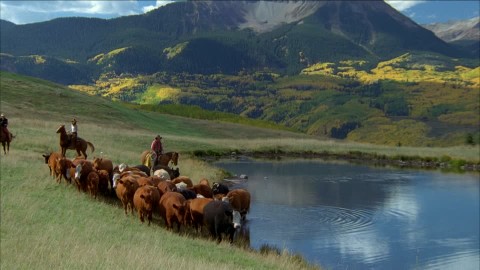How Many Times Must We Do This?
by RANGE contributor
Twenty-three states have now sued the EPA over its so-called “Waters of the United States” (WOTUS) rule, because once again, the agency is asserting federal authority over water not covered under the law. The lawsuit says the rule “goes beyond the power Congress delegated in the Clean Water Act, raises serious constitutional concerns, and runs roughshod over the Administrative Procedure Act.”
This is eerily familiar. It is the latest round in a decade-long litigation saga, chronicling an unrelenting onslaught of federal control over private property. The new legal case is different, only in the sense that we already know the outcome, because we have already seen it. What a mess.

When the Obama EPA first published its onerous new “interpretation” in 2015, it essentially proclaimed federal jurisdiction over every creek, pond, ditch, puddle, and parking lot drain in the country. It would have subjected to EPA jurisdiction all activity that touches any water – a vast expansion of federal jurisdiction under the Clean Water Act, which explicitly applies to America’s major rivers, bays, and oceans.
Colorado led the 2015 legal challenge, joined by half the other states, and a federal Court of Appeals blocked WOTUS implementation in those 26 states, ruling that EPA had exceeded its statutory authority – a huge victory for western water rights. However, a different federal court disagreed, resulting in a WOTUS rule blocked in 26 states, still uncertain in the others, and a controversial 2016 campaign issue.
After that election, the new administration’s EPA withdrew the 2015 rule and issued new guidelines known as the Navigable Waters Protection Rule, essentially returning the earlier understanding of federal jurisdiction over waters that are contiguous to major navigable waterways – which is what the law says.
Next, Colorado reversed its position and in 2020 joined several environmental groups filing suit to demand reinstatement of the Obama-era rule., a bizarre twist with a state essentially demanding federal control over state waters. One district court agreed and blocked the newer version, in Colorado only, but was soon reversed by the 10th Circuit Court of Appeals. That left the newer rule in place until the election of President Biden, who on his first day in office ordered it withdrawn. A new rule, virtually identical to the 2015 Obama version, was published in January, with EPA proposing to reinstate it officially on March 20.
The same lawsuits are now being filed, and we already know federal courts are likely to strike down the rule as an overreach of EPA’s legal authority, because they did so before in an almost identical situation. So, why is EPA still pushing its discredited, illegal power grab? If anything, the current Supreme Court is even more likely to reign in EPA’s blatant overreach.
Words matter. The Clean Water Act of 1972, from which EPA gets its authority to regulate water, contains the phrase “waters of the U.S.” in twelve places. Nine use the phrase “navigable waters of the U.S.” (NWOTUS) and the other three refer specifically to barges and the Gulf Inter-coastal Waterway. There are no non-navigable “waters of the U.S.” Not in the law.
No wonder federal officials always use the acronym WOTUS. They do not use NWOTUS – what the Clean Water Act actually says – because it would be too obvious that their agenda goes beyond the law. That landmark anti-pollution law has been amended substantively at least four times since 1972, yet even knowing this was in dispute, Congress has never changed the plain language, “navigable waters of the U.S.” It intended to stop pollution of navigable waterways, which involve interstate commerce, but asserted no federal authority over smaller bodies of non-navigable waters. The law clearly says that inland waters belong to the states, as was always understood.
Truthfully, EPA is still seeking revenge for losing its 2012 case against a small Wyoming rancher named Andy Johnson. The agency tried to fine Johnson $20 million for building a small stock pond, an action explicitly exempted from EPA regulation under the law. Because the pond eventually flows into Six Mile Creek, which flows into Black’s Fork, which flows into the Green River, EPA tried to claim the pond is a “navigable, interstate waterway of the U.S.” He went to court and forced the EPA to back down, prompting officials to get even by rewriting the legal definition of “waters of the U.S.”
Twenty years later, their effort is still doomed to fail because Congress has never given EPA such authority. But before the agency finally loses this latest round, how many more Andy Johnsons will be forced to spend millions defending their entirely legal use of private land?




